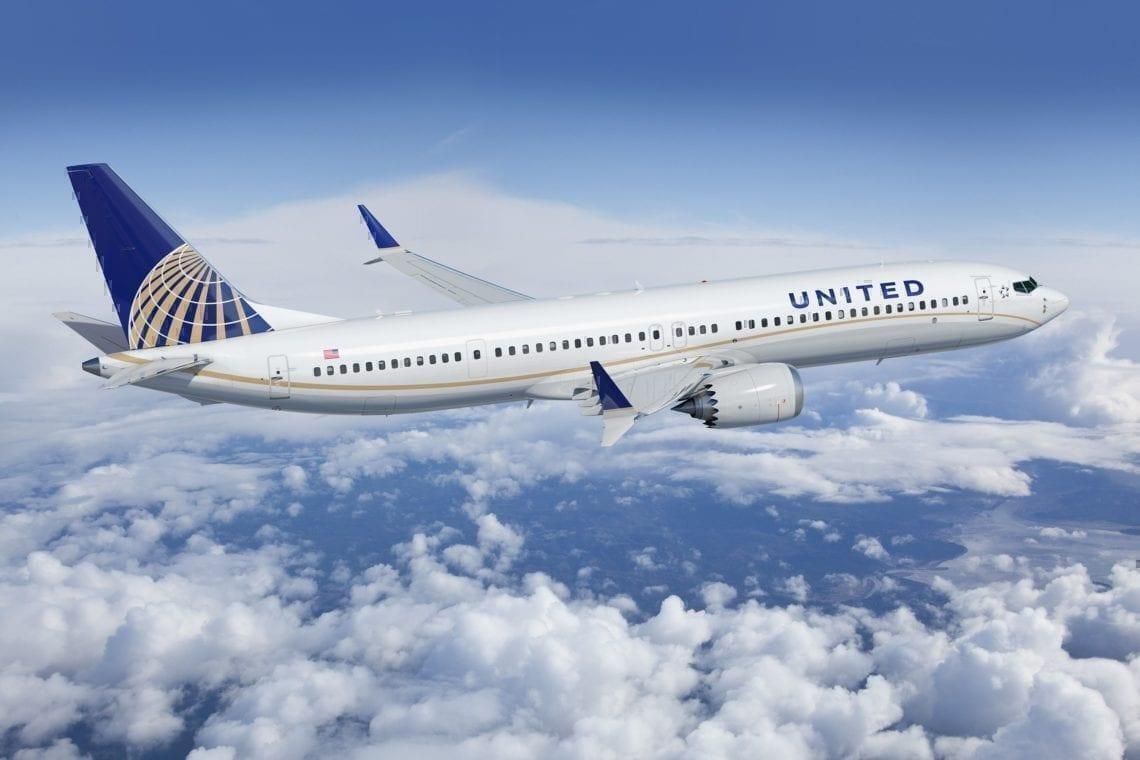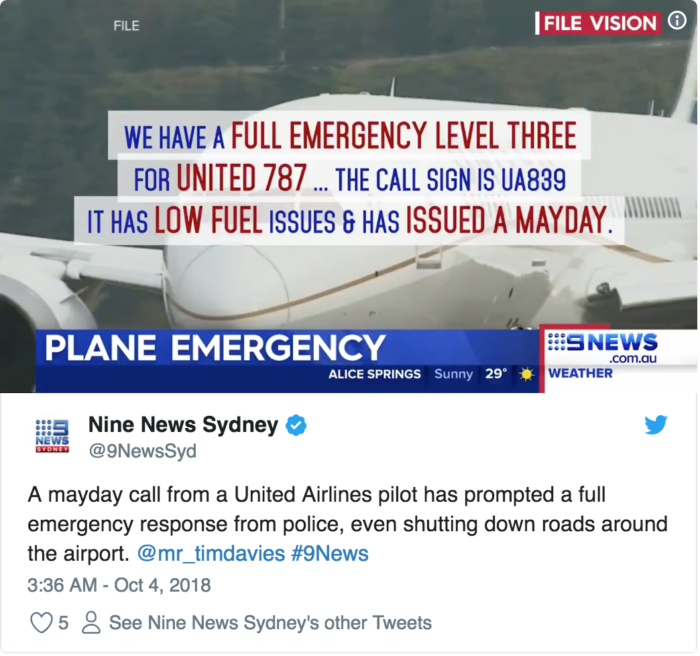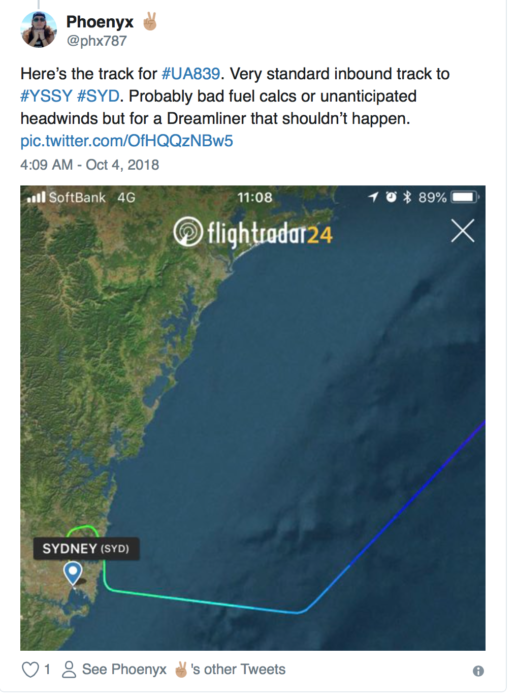This week a pilot on a United 787 flight from Los Angeles to Sydney issued a mayday distress signal indicating a low fuel situation. Thankfully, the plane landed safely and now we're not entirely sure there ever was an emergency. So what happened? Was it a mistake or did the plane actually nearly run out of fuel?
Mayday fuel declaration
On Thursday October 4, United flight 839 made the emergency call, issued a mayday fuel declaration and everyone sprung into action. The police closed a total of 15 different roads for the duration of the landing. The Water Police assembled on Botany Bay around the terminal. Everyone prepared for the worst.
But the flight was a normal flight with no indication of a low fuel possibility. It had a total flight time of 14hr5min, which was as scheduled. Most tellingly, the flight wasn’t full. It had neither too many passengers nor too much cargo. Also, the 787-9 is the same plane United has used on the route from Los Angeles to Singapore, which is a couple of hours longer. The plane can hold the fuel. So unless there was a leak, a diversion, or some serious head winds, it would be very unlikely the plane could be low on fuel.
In short, the plane landed smoothly, the passengers disembarked as normal and no one seemed any the wiser. Except for that runway lined with fire trucks and general mayhem.
Was there ever any real danger on the United 787 Sydney flight?
In hindsight, it seems no one expected this was a real emergency. Naturally, news outlets within Australia jumped on the story. But United was quick to play down the situation. The airline claimed a simple ‘technical issue’ was to blame.
An explanation from the Civil Aviation Safety Authority
Throwing light on the situation Peter Gibson from the Civil Aviation Safety Authority explained why the panic was unfounded.
He said, “Mayday-fuel is a very specific broadcast. Quite different to the mayday-mayday broadcast which tells people the aircraft is in trouble. It’s a bit like the fuel light coming on in your car. Which is not telling you you’re about to run out of fuel.... You’re getting low.”
So it was all a big misunderstanding?
As funny as it appears, if it were a misunderstanding – this is troubling in itself – possibly even more so. Flawless communications and mutual understandings between Control and the aircraft is a basic need. When this breaks down, planes can go missing.
However, according to Skbary,"The term MINIMUM FUEL has, in the past, held different meanings for different aircraft operators and in different parts of the world." But despite the reassurances from the Civil Aviation Safety Authority there is a discrepancy between what’s written on the CASA website and Peter Gibson’s interview.
There it states:
"MAYDAY FUEL DECLARATION is a distress message indicating the pilot-in-command has assessed that the aircraft is threatened with grave and imminent danger and requires immediate assistance."
However, the Fixed Fuel Reserve sounds more like the call they claim the United pilot made.
"FIXED FUEL RESERVE – the amount of fuel, expressed as a period of time, required to fly at holding speed at 1,500 feet above aerodrome elevation at ISA conditions, calculated with the estimated weight on arrival at the destination alternate aerodrome, or the destination aerodrome when no destination alternate aerodrome is required, that would be useable fuel remaining in the fuel tanks until completion of the final landing."
Based on this, the United Airlines flight would have still had 30 minutes of fuel – which is what they’re suggesting was the case.
So in the end, the “technical issue” may have just been a slip of the pilot's tongue. But at least it made for a good scramble practice of the Sydney authorities.



